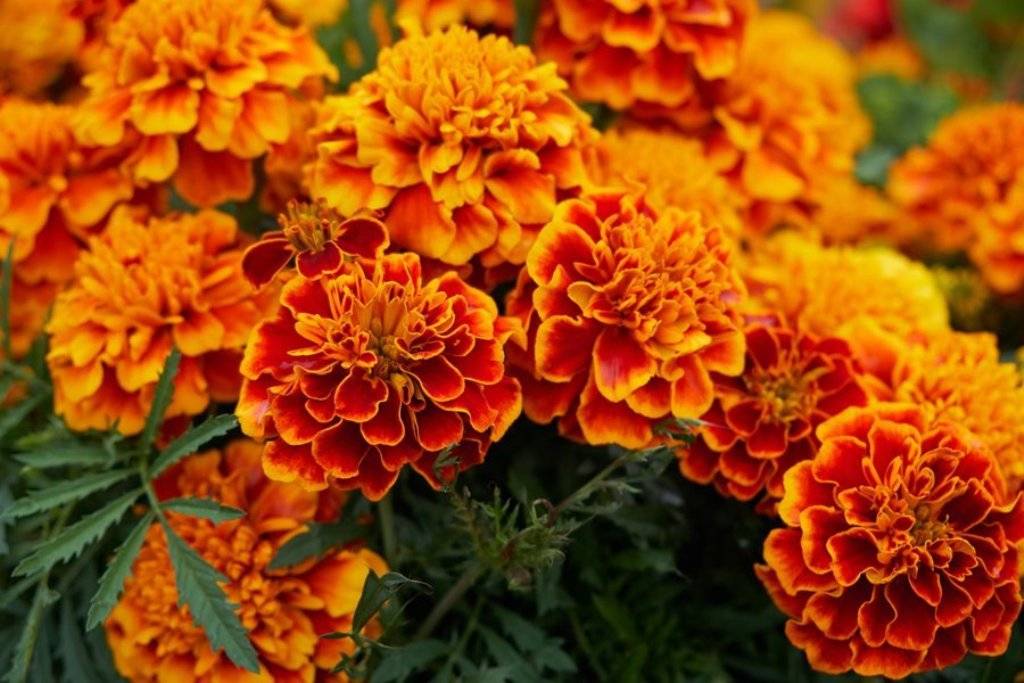
In the last few years, the farmers have shifted from traditional agriculture to floriculture. Cut flowers are one of the best cash crops, as they are easy to grow, produce quickly and can supply a good income throughout the growing season and have low investment needs. Among these the most popularly cultivated flower in India is Marigold.
It is a low maintenance and high yielding crop. It is a perennial plant; it lives through the years. These reasons make it farmer’s favorite. Its price in the market keeps on fluctuating and can range between Rs 20- 80/kg, according to the demand. Marigold Cultivation has the potential of raising 2-4 lakhs profit from 1 acre of land. There are many examples in India of the people who left their high paying jobs took up Marigold farming and never looked back.
There are 2 varieties of marigold which are distinguished on the basis of their size and characteristics. The 2 varieties are African Marigolds which are bigger in size and French Marigolds, the smaller ones.
What so special about Marigolds?
-
These little yellows flowers are perennial and can thrive all year long, during summer, spring and autumn but cannotwithstand very low temperatures.
-
Marigolds are pest repellents. It helps to keep those pests and critters away.
-
It is a cultural symbol of India and we can find garlands made from these marigolds in lot of households and temples in India.
-
Dyes extracted from these flowers are used in the textile industry.
-
Essential oils extracted from them are proven to have protective effects on skin. Its oil is extensively used in the cosmetics industry.
-
It also has some medicinal properties. It is also required by the companies making oils and medicines.
-
The temples require marigolds 365 days in a year. Demand for these flowers is especially high during wedding and festival seasons.
From the above facts, it can be established that marigolds have an extensive market in India and a huge earning potential.
Things to Consider before starting Marigold Farming:
Like any other business, marigold farming requires infrastructure and cost. It is imperative lay down a financial plan for this commercial plantation.
According to a study by international journals input cost of cultivation of Marigold flower per hectare of land is approximately Rs 85000. The yield per hectare of marigold is estimated to be 84.16 quintals. Net return from the farm under study was Rs 1,00,557.
Agriculture practices for Marigold farming
Climate requirement: It requires moderate temperature for exuberant growth and flowering. Optimum temperature range is 15 - 29 degrees celsius. However, temperature above 35 degrees celsius can restrict the plants growth and reduced flower size.
Soil requirement:
Marigold is adapted to different types of soils, best one being loamy soils with pH in the range of 6.5-7.
Land preparation:
A well ploughed land with fine tilth is required for the cultivation of these flowers. FYM @ 20-25 tones/ha should be added in the soil.
Seed Treatment & Sowing:
Before sowing the seeds should be treated with Azosprillium of 80gm in 20 ml of rice gruel. Seeds can be broadcasted from May to June months on raised beds. The seed rate required is 200-300 g/ acre in summer season and 150-200 g/ ha for winter season. The seed beds have to be watered regularly and when the plants reach 15 cm of height, they are to be transplanted in the main field with a 45 * 35 cm spacing. Mostly the plants are transplanted after 25- 30 Days after sowing.
Fertilizer requirement:
The recommended dose of N:P:K is 100:75:75. Half dose of nitrogen and full of Potassium & Phosphorus should be added as the basal dose. The rest dose of nitrogen is applied at 30-40 days after transplanting.
Irrigation:
Irrigation should be done once in a week. The plants require constant moisture from bud stage to harvesting. Proper water drainage system should be maintained and standing water should be avoided.
Weeding:
Any weeds that appear can be removed by hand weeding.
Harvesting & Packaging:
Plants flower after 40-50 days after transplanting. The flowers are picked when they attain full size depending upon the variety. The harvesting of the flowers should be done in the morning after giving them irrigation for better flower quality. A single plant yield up to 100-150 flowers. Loose flowers are packed in a bamboo basket while the flowers with stalks are packed in bundles and transported to the market. After harvesting, the flowers must be kept in a cool place. Marigold is a highly perishable flower. So, they need to be sold immediately after harvest.
Hope this article has provided you a deeper insight into the Marigold farming business!

















